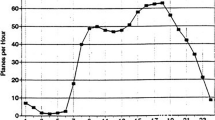Abstract.
We study a service system modelled as a single server queuing system where request for service either can be processed at the service system or by a subcontractor. In the former case the customer is incurred waiting costs but the service is free, while in the latter case the customer must pay for the service but there is no waiting time, hence no waiting costs. Under the premises that the subcontractor prices his services in order to maximize his profit, we study two work allocation rules, which given the price of subcontractor seek to allocate work such that the costs of the customers are minimized. The two work allocation rules are characterized by one being centralized and randomized while the other is decentralized and deterministic. From the subcontractors point of view the latter is preferred and under this rule he receives lesser requests but can charge a higher price compared to the former. We also show that from the customers point view, any of the two work allocation rules are to be preferred compared to the base case where there are no subcontractor.
Similar content being viewed by others
Author information
Authors and Affiliations
Corresponding author
Additional information
Manuscript received: November 2003/Final version received: March 2004
Rights and permissions
About this article
Cite this article
Larsen, C. Comparing two socially optimal work allocation rules when having a profit optimizing subcontractor with ample capacity. Math Meth Oper Res 61, 109–121 (2005). https://doi.org/10.1007/s001860400389
Issue Date:
DOI: https://doi.org/10.1007/s001860400389



